There’s just something magical about driving through the Luberon in southern France. Every bend in the road seems to reveal another storybook village perched high on a hill.
The rolling landscapes, with vineyards and fields of lavender, almost beg you to pull over at every turn. Exploring the hilltop villages of Provence like Gordes and Roussillon let me experience some of the most beautiful and authentic parts of France.
Each village had its own unique charm. Gordes rises dramatically from the valley, all stone houses and winding streets, while Roussillon glows with its warm ochre cliffs.
Small cafes, local markets, and those jaw-dropping views made every stop special.
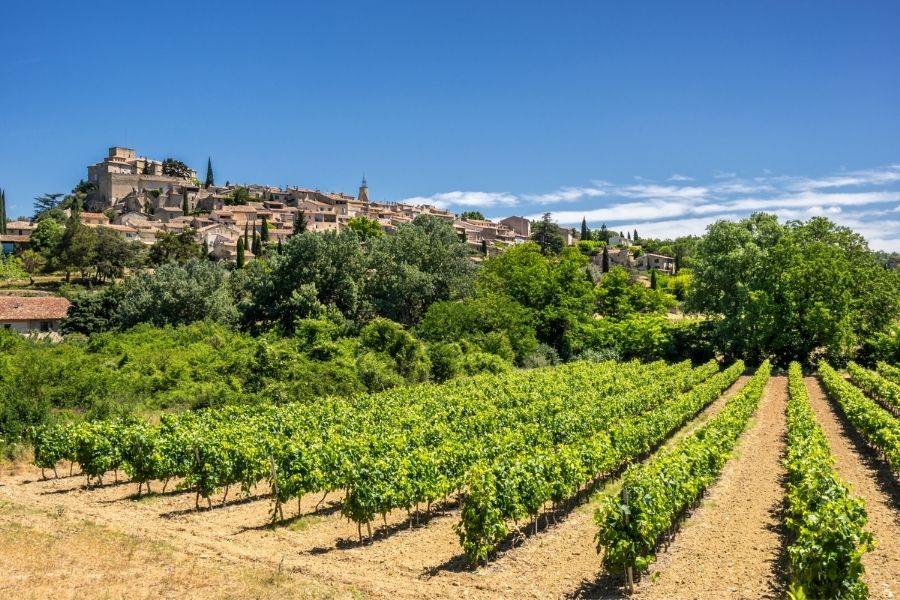
My journey through the Luberon gave me a perfect mix of culture, history, and nature. If you’re dreaming of discovering Provence’s hidden gems and want real tips on what to see and do, you’ll want to keep reading.
Planning Your Enchanting Drive Through the Luberon
Before you hit the road in the Luberon, a little planning really helps. The right route, starting point, and timing can shape your whole adventure.
Honestly, it can mean the difference between a smooth, magical trip and a stressful one.
Best Routes and Scenic Drives
The Luberon is famous for its winding roads, stone villages, and sweeping views. My favorite scenic drive started in Avignon, led through Gordes and Roussillon, and continued to Bonnieux and L’Isle-sur-la-Sorgue.
This route let me visit three of the prettiest hilltop towns while passing lavender fields and vineyards. Driving this loop took about four days, though you can easily stretch or shorten it.
Most signs are easy to follow, and I usually found parking near town centers. If you’re short on time, a shorter loop from Aix-en-Provence works well too.
Here’s a quick comparison:
| Start Point | Main Stops | Suggested Duration |
|---|---|---|
| Avignon | Gordes, Roussillon, Bonnieux | 3-4 days |
| Aix-en-Provence | Lourmarin, Bonnieux, Gordes | 1-2 days |
| Marseille | Aix, Lourmarin, Roussillon | 2-3 days |
Choosing Where to Start: Marseille, Avignon, or Aix-en-Provence
Picking the right starting city can save time and make your trip so much better. I started from Avignon, but honestly, each base has its own perks.
Avignon is perfect if you love medieval history and direct trains from Paris. Aix-en-Provence feels lively, with bustling markets and a strong Provençal vibe.
Marseille works well for those flying into southern France, though it’s a slightly longer drive to the hilltop villages. Still, you get both city life and countryside.
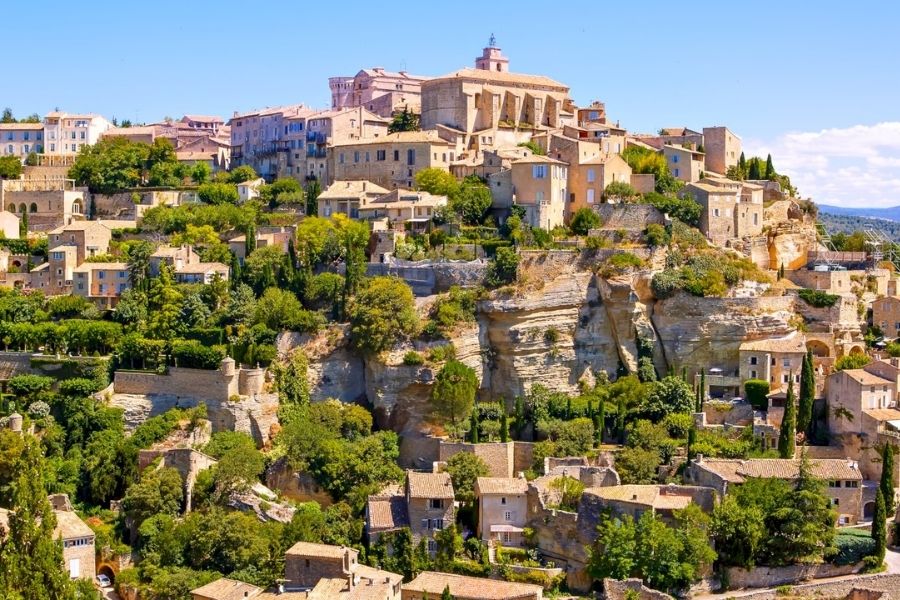
All three cities have car rental offices and easy highway access to the Luberon. In summer, I found Aix-en-Provence the least crowded and a great place to relax before heading out.
Car Rentals, Public Transportation, and Guided Tours
Exploring the Luberon by car gave me the most freedom to hop from village to village. I rented a compact car in Avignon, which made parking in small towns a breeze.
If you want an automatic, definitely book ahead—especially in summer. Public transportation connects some bigger towns, but rarely reaches smaller hilltop villages like Gordes or Roussillon.
Timetables can be spotty, and you’ll often need to transfer. For those who’d rather not drive, guided tours leave from Avignon, Aix-en-Provence, or Marseille.
Some tours offer small-group experiences with local guides. I’ve joined a couple and found them great for learning local stories and tasting wine along the way.
When to Visit for Lavender and the Mediterranean Sun
If you want to see lavender blooms, late June through mid-July is the sweet spot. The violet fields stretch across the Luberon and make for incredible photos.
I visited in early July and caught both full-bloom lavender and sunflower fields. May to September brings the sunny Mediterranean weather everyone loves in Provence.
July can get busy with festivals and tourists, so I recommend June for more peaceful drives and cooler evenings. Summers are dry and roads are clear, but always bring water and sunscreen—shade is rare out there.
Exploring Iconic Hilltop Villages
Stone villages crown the Luberon’s rolling hills. Each one offers its own views, colors, and flavors of Provençal life.
The drive through this region is full of discoveries—from grand stone homes to olive trees stretching out under the sun.
Gordes: Stone Majesty Over the Luberon Valley
Gordes rises above the valley, its houses stacked on steep slopes. Walking its narrow, winding streets, I felt surrounded by honey-colored stone.
Everywhere I looked, centuries of history echoed in the walls. From the top, panoramic views of the Luberon Valley took my breath away.
Early mornings are best—fewer crowds and golden sunlight lighting up the village. Key sites include the château at the summit and small art galleries tucked into old walls.
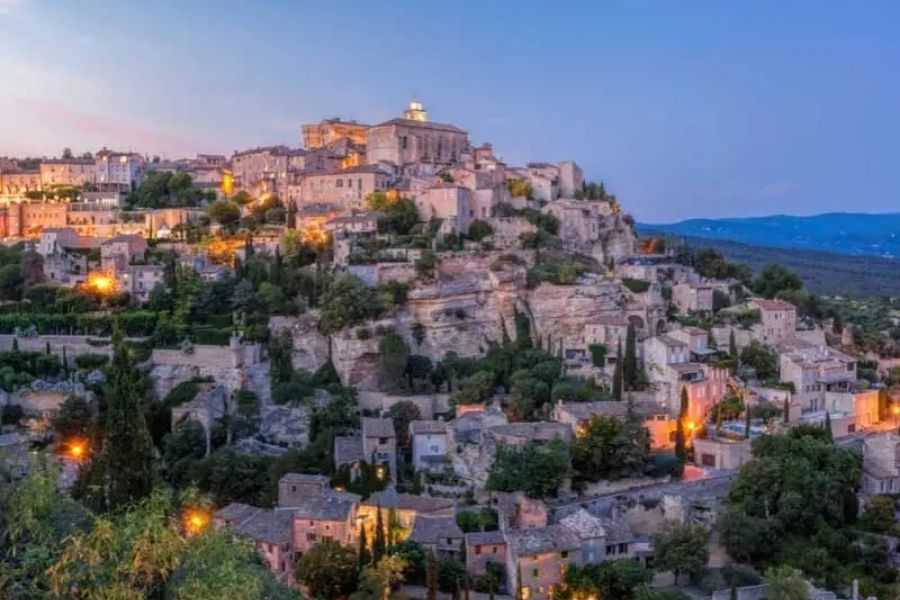
Many homes feature gardens shaded by olive trees. Local cafes serve sweet pastries and Provençal specialties, perfect for a quick rest.
At the market, friendly vendors offered lavender sachets and fresh bread.
Highlights:
- Château and village viewpoint
- Stone houses and winding paths
- Local market (check dates before you go)
Roussillon: Ochre Cliffs and Timeless Charm
Roussillon’s red and orange buildings shine against green hills and blue sky. The village sits atop dramatic ochre cliffs formed by centuries-old quarries.
As I wandered, dust from the colorful earth clung to my shoes. Shops sell ochre pigments, and artists paint village scenes on tiny canvases.
The Sentier des Ocres (Ochre Trail) leads through a landscape that feels almost unreal, with towering pillars of red and yellow stone. In the small square, I enjoyed a scoop of homemade ice cream before exploring artisan boutiques full of pottery and soaps.
Roussillon’s charm lies in its mix of natural wonder and relaxed pace—perfect for slow exploration.
Quick Tips:
- Walk the Ochre Trail ($ paid entry; wear sturdy shoes)
- Photograph at sunset for the best light
- Visit local shops for hand-made souvenirs
Bonnieux: Provençal Beauty and Olive Groves
Bonnieux perches quietly over the Calavon Valley, with terraced roofs leading up to an old church at the summit. I parked below and climbed old stone steps, pausing to take in views over vineyards and olive trees.
Cafes spill onto shaded squares scented by lavender and rosemary. At the morning market, I sampled tapenade and goat cheese from the region—salty, sharp, and honestly unforgettable.
The village is less crowded than Gordes or Roussillon, but equally picturesque. Rows of cypress trees and ancient olive groves surround Bonnieux, making every walk feel peaceful.
Don’t Miss:
- Climb to the old church for sweeping valley vistas
- Sample olives and local cheese at the market
- Look for hidden fountains tucked near quiet alleys
Wander Off the Beaten Path: Beyond Gordes & Roussillon
Provence’s Luberon region is full of quiet, scenic routes leading to smaller villages packed with character, local traditions, and some delightful surprises.
Venturing away from the busiest spots gave me the chance to find new favorites, enjoy wine tastings in uncrowded cellars, and connect with guides who knew the land inside and out.
Discovering Lesser-Known Villages
Taking turns off the main road, I discovered villages like Saignon, Oppède-le-Vieux, and Ménerbes. Saignon sits on a rocky outcrop with amazing views of the valley—perfect for a peaceful afternoon stroll.
Shady squares made a great spot for coffee, and tiny bakeries filled the air with the smell of fresh bread. Oppède-le-Vieux felt almost untouched by time.
Stone houses, winding lanes, and quiet courtyards created a living postcard. I rarely saw crowds here, and the only sounds were birds and footsteps echoing through the narrow streets.
Exploring these hidden spots brought a sense of discovery missing in the busier hilltop towns.

Ménerbes was another joy, with its old ramparts and art galleries tucked into centuries-old buildings. I recommend checking village market days for a taste of fresh cheese and olives from local farmers.
Hidden Gems for Wine Lovers
Luberon’s hills are dotted with small family-owned wineries. Near Bonnieux, I stopped at a vineyard run by the same family for generations.
The owners greeted me with friendly smiles and stories about their craft. Wine tastings here felt relaxed and personal—no rush, no crowds.
Some estates, like Domaine de La Citadelle, blend reds and rosés unique to the region. I tasted wines with notes of lavender, fresh berries, and herbs.
Many places welcome visitors for tours and even picnics among the vines. Most of these cellars don’t appear in guidebooks, so asking locals or following roadside signs led me to the best tastings.
A simple tasting fee was often waived if I bought a bottle or two.
Meeting Local Guides and Artisans
Connecting with Luberon locals really deepened my understanding of the region. In Lacoste, I met a guide whose family had lived there for generations.
He walked me through ochre-stained streets, sharing legends and personal stories that made the stones come alive. I visited workshops where artisans shaped clay and painted traditional Provençal pottery.
Watching these craftspeople work, I learned about the patience and artistry needed to keep old traditions alive. Many were happy to chat or offer short demonstrations—some even let me try my hand at the potter’s wheel.
Joining a guided walking tour or meeting artists in their studios added another layer to my journey. The experience felt genuine and heartfelt, reminding me that real treasures often lie just beyond the usual tourist track.
Unforgettable Experiences Along the Route
Early mornings in the Luberon bring the scent of fresh bread and a sky painted in soft pastels. The drive between villages becomes more than just scenery—each stop draws me into the flavors, landscapes, and rhythms that make Provence unforgettable.
Morning Markets and Provençal Breakfast
My perfect day in the Luberon always starts at a local market. In towns like Gordes or L’Isle-sur-la-Sorgue, stalls overflow with vivid fruit, olives, local cheeses, and golden croissants.
The energy is gentle but lively as locals greet each other by name. For breakfast, I never skip a warm pain au chocolat and a café crème from a tiny bakery.
Sitting at a sidewalk table, I watch neighbors swap stories while the morning sun climbs higher. The market is also a great place to buy a crisp apple or fresh goat cheese for a later picnic.
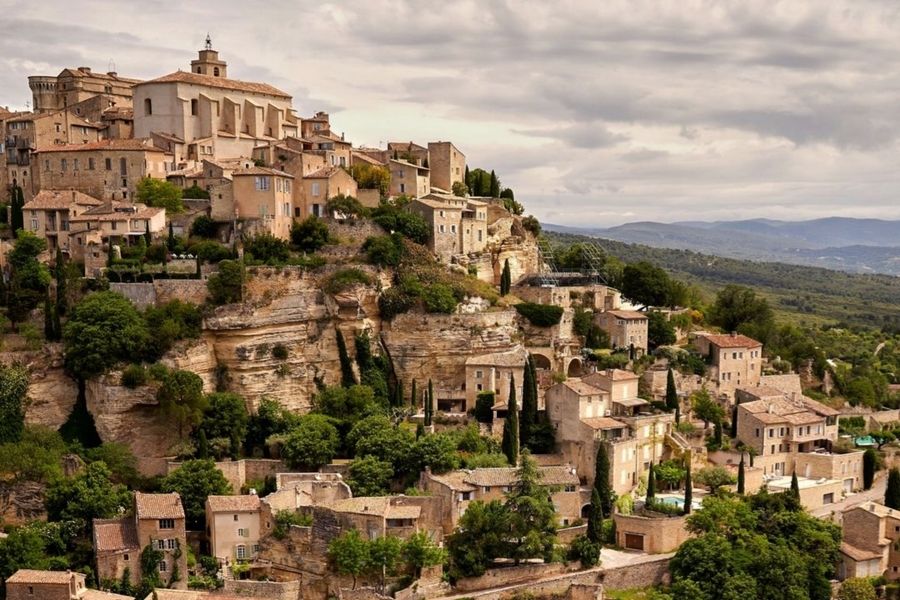
A practical tip: Arrive early if you want the best bread or pastries. The good stuff disappears quickly, especially in summer.
Hiking Through Lavender Fields and Vineyards
Hiking in the Luberon is a feast for the senses, especially when the lavender blooms. Narrow trails wind through purple fields, and the air feels thick with the herb’s perfume.
Sometimes, I pause to watch bees hover from blossom to blossom. Vineyards stretch across the hills, their leaves catching the sun.
Some paths, like those near Bonnieux, offer sweeping views of the valley dotted with stone farmhouses. Hiking here feels peaceful; I never rush, preferring to stop and soak in the view or snap photos of a butterfly on a poppy.
If you go, wear sturdy shoes and bring water. I find July best for lavender, though the vines look lovely from late spring through fall.
Immersing Yourself In Village Life
Lingering in a hilltop village like Roussillon, I find that life moves at a slower pace. I stroll narrow streets lined with ochre-colored houses and pause at small art galleries or pop into a café for a glass of rosé.
In the town square, I might catch a game of pétanque or listen to old friends chatting as children play nearby. Sometimes, I join the locals in ordering a slice of tarte tropézienne for an afternoon treat.
Shopping in tiny boutiques, sampling Provençal honey, or even just sitting on a bench watching the world go by can make an ordinary afternoon memorable. Village life here invites me to relax and truly savor each moment.
Extending Your Provence Road Trip: Day Trips and Attractions
Some of the most memorable places I discovered were just a short drive from the famous Luberon villages. Ancient history, wild nature, and vibrant markets revealed the full depth of Provence.
Arles and Roman Ruins
Arles really surprised me—what a place for anyone who loves Roman history. The ancient amphitheater stands right in the middle of town, still hosting events after all these centuries.
I wandered through its stone corridors, trying to picture the roar of crowds during gladiator games. That kind of energy must’ve been wild.
Nearby, the Roman Theater draws people for open-air shows in summer. The city’s archaeological museum—Musée Départemental Arles Antique—shows off statues, mosaics, and even a Roman barge they pulled out of the Rhône River.
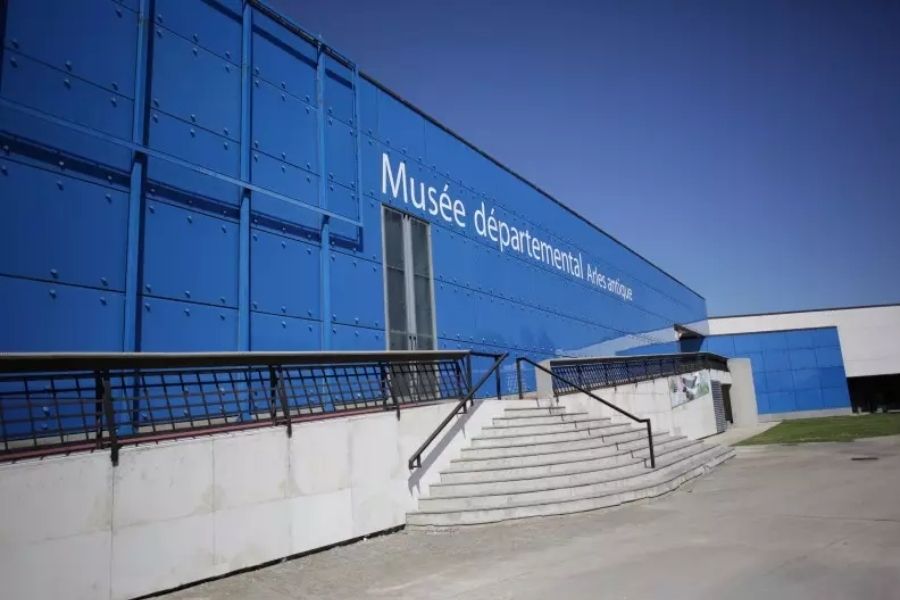
Don’t skip these:
- Arles Amphitheater
- Roman Theater
- Cryptoporticus (those underground Roman galleries)
After a morning getting lost in the Roman sites, I wandered Arles’ winding streets. There’s something about this city that pulls you in.
Saint-Rémy-de-Provence and the Olive Route
Saint-Rémy-de-Provence instantly felt calm and inviting when I arrived. Shaded squares and the smell of fresh bread from local bakeries made it impossible to resist stopping.
I strolled along the Olive Route, lined with ancient olive trees. It’s peaceful, and the scenery is just classic Provence.
The town buzzes on market days, and the ruins of Glanum, an ancient Roman town, sit just outside Saint-Rémy. Walking among those columns, I couldn’t help but imagine what life looked like here so long ago.
Highlights worth your time:
- Glanum archaeological site
- Traditional Provençal markets (Wednesdays are especially lively)
- The Olive Route, complete with olive oil tastings
I made a quick detour to Saint-Paul de Mausole, the old asylum where Van Gogh created some of his most famous paintings. That place has a quiet magic.
Camargue: Wild Beauty at Provence’s Edge
Camargue feels like another world compared to the Luberon’s hills. The land stretches flat and open, with salt flats that shimmer in the sun and wild horses grazing near pink flamingos in shallow lagoons.
I brought binoculars and spotted all sorts of birds out there. The horseback ride I took made me feel closer to the wild side of Provence.
If you’re into wildlife photography, you’ll want to visit early or late in the day. That’s when the light gets golden and the animals come out.

Camargue’s best features:
- Wild white horses
- Flocks of pink flamingos
- Marsh trails and sandy beaches
Before heading back north, I grabbed fresh seafood at a tiny port village. Honestly, I still think about that meal.
Avignon’s Papal Palace and UNESCO World Heritage Sites
Avignon really caught me off guard with its lively plazas and fascinating past. The Papal Palace, which towers over everything, is a UNESCO World Heritage Site.
I wandered through those grand halls and chapels. It’s wild to think Avignon actually served as the center of Christianity for a while.
Of course, I couldn’t skip the famous Pont Saint-Bénézet (the “Pont d’Avignon”). That bridge stretches over the Rhône River and pops up in that catchy French children’s song.
Key sights:
| Attraction | Why Visit? |
|---|---|
| Papal Palace | Gothic architecture, medieval history |
| Pont Saint-Bénézet | Iconic, beautiful river views |
| City walls and old streets | Perfect for an afternoon stroll |
When I wandered the historic quarter, I heard street musicians everywhere. Little cafés spilled out onto the cobblestones, and honestly, the whole medieval town felt like it was buzzing with life.

